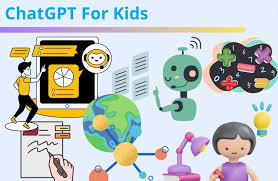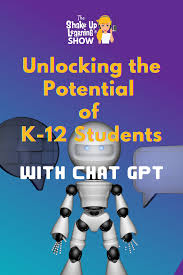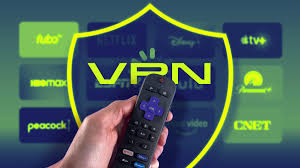How Tech Toys & Educational Content Boost Learning & Growth
🧠 Smart Play for Kids – How Tech-Enabled Play Boosts Learning & Development
Smart play is more than fun — it’s a powerful fusion of technology, learning, and creativity. In today’s digital world, educational toys and interactive content are designed to promote not only cognitive growth but also emotional intelligence and real-world skills. From AI-powered storybooks to augmented reality kits, smart play content has emerged as a valuable tool for raising curious, confident, and capable kids.
🎯 What Is “Smart Play” for Kids?
Smart play refers to learning-enhanced toys, apps, and games that use technology to make education more interactive and effective. These can include:
- AI-powered toys like coding kits, talking dolls, or smart storybooks that adapt to a child’s learning pace.
- Interactive media such as educational shows and learning apps that develop both cognitive and emotional skills.
- AR-enhanced playsets and STEM-based gadgets that combine screen time with hands-on exploration and critical thinking.
🌟 Key Benefits of Smart Play
1. Personalized & Adaptive Learning
Smart toys often use AI or sensors to adjust the content based on the child’s responses, making learning more engaging. Whether it’s solving math puzzles, practicing vocabulary, or exploring science concepts, these tools create a custom experience for each learner.
2. Cognitive & Problem-Solving Skills
STEM-focused kits and logic-based games challenge kids to think critically. Play involving building blocks, programmable robots, and digital puzzles has shown significant improvements in spatial awareness, memory, and analytical thinking.
3. Creativity & Imagination
Open-ended toys like digital story creators, AR art boards, or eco-blocks help children express ideas through imaginative play. These tools encourage storytelling, design thinking, and innovation beyond what traditional toys can offer.
4. Social & Emotional Learning (SEL)
Many smart toys now include reflection prompts, cooperative tasks, or emotion-based activities. These help children learn empathy, manage feelings, and work with others — key skills for life success.

5. Language Development
Speech-enabled toys and language-learning apps support pronunciation, sentence formation, and vocabulary building. Some toys even introduce multi-language modes, helping children pick up second or third languages early on.
6. Sensory & Motor Skills
Smart play doesn’t always mean screens. Many kits are tactile and hands-on, encouraging physical interaction. This helps with fine motor development, hand-eye coordination, and multi-sensory learning.
🔍 Popular Types of Smart Play Content
| Type | Examples | Key Benefit |
|---|---|---|
| AI Toys | Coding robots, speech dolls | Adaptive learning, early STEM exposure |
| AR Kits | Virtual globes, science labs | Immersive geography & science understanding |
| Eco Kits | Bamboo or recyclable blocks | Creativity + environmental awareness |
| Language Games | Voice-based apps, word games | Vocabulary and pronunciation development |
| Smart Storybooks | AI-driven story generators | Narrative skills and listening engagement |
| STEM Robots | Screen-free code bots | Logical thinking, early programming skills |
| Interactive Media | Educational TV apps | Literacy, STEM, and social skill building |
📊 Scientific Evidence & Real-World Success
- Studies show that multi-sensory smart toys increase engagement, especially in toddlers.
- Kids using educational TV content showed 10–24% improvement in literacy, numeracy, and fine motor skills.
- Harvard research indicates that problem-solving play boosts cognitive flexibility by over 25%.
These results prove that when designed intentionally, smart toys can make a meaningful difference in childhood development.
⚠️ Challenges & Precautions
🔐 Privacy & Data Collection
Some smart toys collect user data. It’s essential that parents check privacy settings, avoid toys without clear policies, and ensure the product is designed to comply with child data safety laws.
📵 Screen Overuse
Even educational tech can become overwhelming. Too much screen time can lead to reduced attention span, eye strain, and limited physical activity. Balance is key.
🤖 Digital Dependency
Smart toys are tools — not replacements. Human connection, face-to-face communication, and physical play should still be central to a child’s day.
💰 Cost & Access
High-tech educational toys can be expensive, creating barriers for many families. The goal should be equitable access through schools, libraries, and affordable options.
💬 Emotional Intelligence
While AI is improving, it still can’t replace human empathy. Children must continue to interact with parents, teachers, and peers for emotional growth.
👨👩👧👦 Best Practices for Parents & Educators
- Mix traditional and smart toys – combine blocks, puzzles, and dress-up with digital tools.
- Choose age-appropriate products – follow developmental guidelines to avoid overcomplex features.
- Engage in co-play – play together and ask open-ended questions to spark deeper thinking.
- Set time limits – use timers or schedules to prevent overuse of screens.
- Check for safety – ensure the toy is well-built, secure, and includes parental controls.
🔮 The Future of Smart Play
The smart toy industry is growing fast — expected to exceed $100 billion by 2030. New trends are already shaping the next generation of educational play:
- Eco-friendly & inclusive designs for all abilities
- AR/VR learning kits that combine digital and physical experiences
- Smart toys in classrooms via curriculum integration
- Emotional literacy tools that help children reflect and express feelings
The line between tech and traditional play will continue to blur — creating powerful, playful learning experiences for every child.
✅ Conclusion
Smart play is not just a trend — it’s a transformative approach to childhood development. When used responsibly, these tools support language, creativity, problem-solving, emotional intelligence, and more. Parents and educators play a crucial role in choosing wisely, engaging actively, and balancing technology with real-world interaction.





